- HOME
- Technical Information
- CAE Analysis, Analysis and Processing Technologies
- Analysis Technologies
- Fracture Analysis
- Fracture Analysis Case Study
Fracture Analysis Case Study
Fracture Analysis Based on the Fracture Shapes of the Test Sample: Investigating the Cause of Different Strengths in the Same Material
Not all products have the same strength, even if they are molded from the same material. If there is an abnormal fracture in a product, the cause of this must be investigated through fracture analysis in order to resolve the issue.
This case study investigates the cause of varying strengths in tensile test pieces made from the same material.
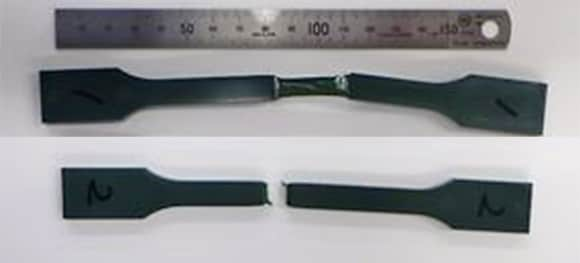 Tensile test results with non-reinforced PBT resin
Tensile test results with non-reinforced PBT resin When a tensile test was conducted with non-reinforced PBT resin, only one of the 10 test pieces broke without stretching.
The top sample shows necking but the bottom sample broke without stretching. The test piece with necking was further stretched until broken, and the two fracture surfaces were observed using a scanning electron microscope (SEM).
The left side below is the sample with necking and the right side is the sample that broke without stretching. It can clearly be seen that the shapes are different. The left fracture is ductile, and the right fracture is brittle. The material used for the test usually stretches sufficiently, so we know that the right side is abnormal.
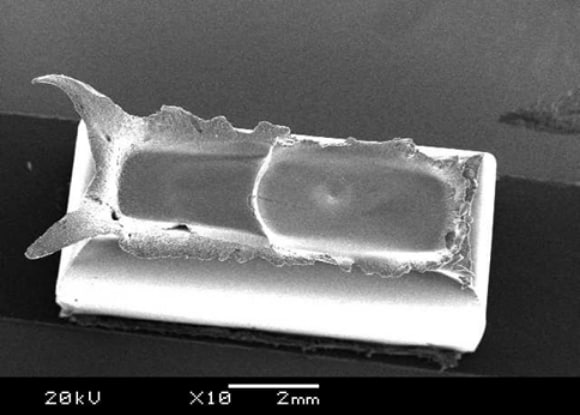
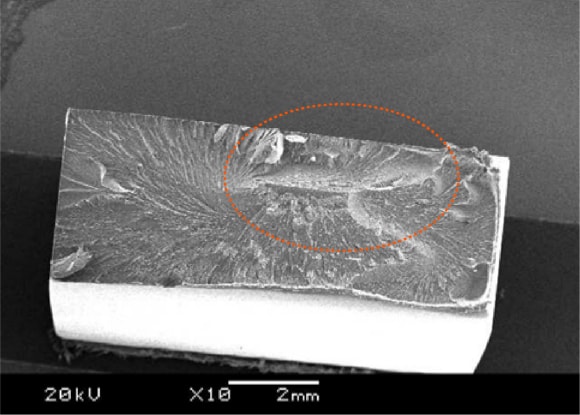
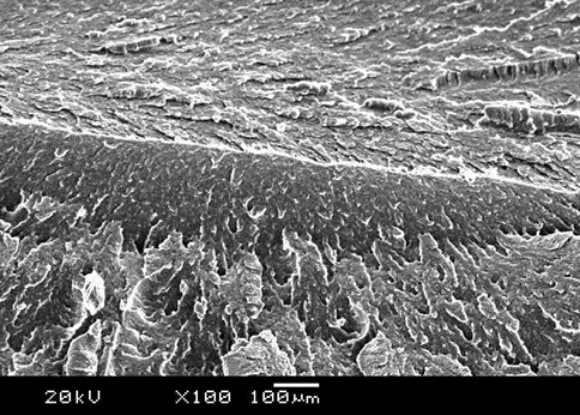 Enlargement of the crack area of the brittle fracture
Enlargement of the crack area of the brittle fracture The image to the right shows an enlargement of the crack area in the upper-right image (the red circle). We can see that there is a height difference in the center of the photo. To determine the cause of this, a thin piece a few microns thick was cut out at the cleavage area of this sample and observed with a microscope.
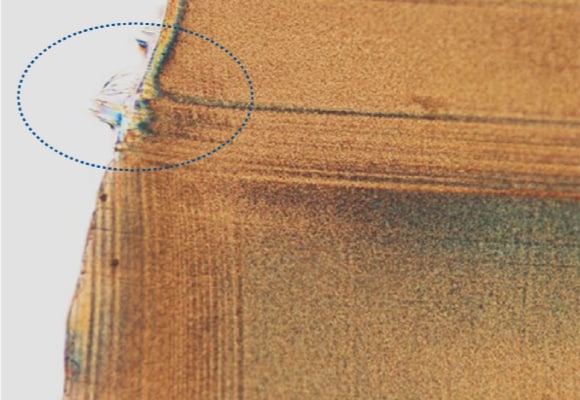 The crack part with a height difference
The crack part with a height difference The part with the blue circle is where the height difference occurred. Streaks can be seen where the resin flow was insufficient during molding.
From the results of this analysis, it was determined that the tensile test piece with the abnormal cracking method had a molding defect. This demonstrates how fracture analysis can be used to identify the cause of abnormal cracking and lead to measures to prevent it.